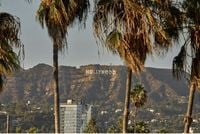On the surface, Los Angeles still glimmers with the nostalgia of Hollywood’s golden age: palm trees, movie billboards, and the ever-present hum of creative ambition. But in October 2025, the city’s entertainment industry is facing a downturn so deep that it’s shaking the very core of its workforce and culture. The numbers alone paint a stark picture: according to the Bureau of Labor Statistics, Los Angeles County’s motion picture industry employed about 100,000 people at the end of 2024, down sharply from 142,000 just two years earlier. Nearly 30% fewer movies and TV shows with budgets of at least $40 million began shooting in the U.S. in 2024 compared to 2022, and the first three quarters of 2025 saw an additional 13% decline, as reported by data firm ProdPro.
This contraction is felt most acutely by the city’s creative middle class—the animators, sound engineers, production managers, and small business owners whose livelihoods depend on a steady stream of film and television work. For many, the dream of Hollywood has become a daily struggle to make ends meet.
Brian Mainolfi, a veteran animator who once worked on classics like Disney’s “The Hunchback of Notre Dame” and “Mulan,” is a case in point. After his last show was canceled in 2024, Mainolfi’s professional life shrank to teaching a single animation class at a Cal State campus three hours away, earning just $350 a week. “People love cartoons,” he told The Wall Street Journal. “And I love making cartoons.” But now, with his union healthcare set to disappear by year’s end, Mainolfi is contemplating a future outside his craft for the first time. “By the end of the year if I don’t have something, I’m going to have to apply to a big-box store or a grocery store or something.”
He’s not alone. Pixie Wespiser, a production manager and producer with credits on 36 TV series, including the original “Night Court,” says, “This is the first year since 1989 that I haven’t had a show to work on. I look around and I see so many people who are seriously suffering.”
What sparked this crisis? The roots go back to the dual strikes by actors and writers in 2023. When the strikes ended, studios slashed production budgets, wary after the pandemic’s devastating blow to theaters and a slowdown in streaming growth that began in 2022. According to The Wall Street Journal, entertainment companies now prioritize profitability over expansion, resulting in fewer greenlights for new projects and a dramatic drop in work for crews and creatives alike.
The pain is not limited to Hollywood’s backlots. The ripple effects have hit local businesses that once thrived on industry spending. Courtney Cowan, who ran Milk Jar Cookies, saw her business plummet by 30% when the strikes began. “It’s not dramatic to say that the result has been personal financial ruin,” she said, recounting how she eventually filed for bankruptcy and now works as a buyer at a kitchen supply store. “After 11 months of unemployment, I found work as a buyer at the culinary supply shop where Milk Jar used to buy equipment.”
The city’s broader economic woes are hard to ignore. Unemployment in Los Angeles stands at 5.7%, higher than California’s 5.5% and well above the national average of 4.3%. The region’s sluggish employment growth lags behind other major metropolitan areas, and the winter’s fires in Altadena and the Pacific Palisades—where many entertainment workers lived—have only made the housing crunch worse.
Hollywood has weathered downturns before, but many analysts believe this one is different. The rise of YouTube and social media has shifted audiences’ attention away from professionally produced content, and the specter of generative artificial intelligence looms large. Many workers fear that new AI tools could soon make animation and visual effects jobs obsolete, threatening a core pillar of the creative workforce.
Thomas Curley, who won an Oscar for his sound work on 2014’s “Whiplash,” hasn’t worked since April of last year, except for one week on a movie that shot exteriors in San Francisco. For Curley, the hardest part isn’t the financial strain—it’s the loss of community. “Feeling like you’re part of a team that’s making something that can provide joy for millions of people around the world is what drew me here in the first place,” he said. “That level of purpose is a really hard thing to let go of.”
Even those who manage to stay afloat are forced to make tough choices. Matt Walsh, a television writer who finally landed his first scriptwriting assignment in 2023, is back working as a production assistant—the job he started with years ago. “It felt like the floor fell out,” he said of the sudden evaporation of job prospects.
Industry leaders and political figures are scrambling for solutions. In 2025, California Governor Gavin Newsom signed a law more than doubling the state’s film and TV tax credit to $750 million annually. But as The Wall Street Journal notes, the program’s limitations—such as its exclusion of “above the line” costs like star salaries and its competitive application process—mean it has yet to lure back big productions. Many studios continue to film overseas, drawn by generous incentives in places like Georgia, British Columbia, and increasingly, Eastern Europe. The “Fantastic Four” saved New York City in a film shot outside London, while “KPop Demon Hunters” was animated in Canada. Amazon’s “The Terminal List: Dark Wolf” is now filming in Hungary and Croatia.
Some, like producer Steven Paul, are determined to buck the trend. Shooting his low-budget film “The Last Firefighter” in Los Angeles, he acknowledged, costs at least a third more than filming abroad. “If we’re going to say we want to bring production back to America, I can’t be the one filming everywhere in the world,” Paul said. Calls for a federal tax credit—at least 15%, to be combined with state incentives—have gained traction among industry unions and the Motion Picture Association of America. Scott Karol, who runs several of Paul’s companies, argued, “We’ve looked at the numbers, and you will reach and exceed the capacity of all our major production hubs if there’s a good federal incentive.”
Former President Donald Trump, meanwhile, has proposed a 100% tariff on movies shot overseas, though the logistics of such a policy remain unclear. In a recent social-media post, he claimed filmmaking “has been stolen from the United States of America, by other Countries, just like stealing ‘candy from a baby.’”
For many in Los Angeles, the future is uncertain. Some, like Susan Hellman, have left the city altogether, selling their homes and retiring early. Others, like animator Rachel Long, have retrained for new careers, even as they hold out hope for a revival of the industry they love. “I hope we can get back to some semblance of how it used to be, so I can work with my friends and collaborators doing something creative that others can enjoy,” Long said. “But I have to face the really real fact that it might not happen.”
As the city’s creative heart beats unsteadily, the fate of Hollywood’s workforce hangs in the balance—caught between shifting economics, technological disruption, and the enduring allure of storytelling.




